There is no doubt that a sighting of dolphins, whales, basking sharks and otters sends the pulses racing amongst all of our guests. But throughout any cruise we normally spot over 80 bird species on land and sea, some of which are very rare and generate as much excitement as the cetaceans do, amongst the bird lovers on board.
We are very encouraged by the variety and numbers of birds seen during the first three months of our 2025 cruising season. Observing oceanic birds from our ships is a real treat for bird enthusiasts who otherwise might not have a chance for such sightings. There is no other way to see so many species and habitats in one trip than aboard one of our cruises. The 2025 season has already delivered some excellent seabird encounters. The year 2025 marks 50 years since the successful reintroduction of the White-Tailed eagle (known colloquially as Sea Eagles) to UK. As a result of this valiant reintroduction project, the population has risen to an estimate 200 pairs across Scotland, and we are privileged to say that White tailed eagles are usually spotted on all our cruise itineraries and sometimes there is a bonanza! This year one of our guides witnessed 10 juvenile sea eagles over the Shiants at one time, whilst another spotted 8 Sea Eagles (plus a golden eagle) over a period of 3 days. Gannets have been particularly active, with regular sightings and always a favourite to watch as they dive at high speed with remarkable precision. Fulmars, with their gliding flight and distinctive tube noses, have been a steady presence along exposed headlands. We have also noted sightings of storm petrels further offshore, and great skuas have been seen on several cruises, typically harassing other birds in flight!
In April, May and June our Idyllic Islands: Mull Iona, Staffa and the Treshnish Isles cruise visits Mull’s offshore Isles of Lunga and Staffa where puffins are nesting in their thousands. The Harp Rock, a sea stack on Lunga, is a “seabird city” breeding site for guillemots, razorbills, kittiwakes and shags. One of the delights of this trip is that the puffins seem to welcome visitors – there is a saying that they know the presence of humans deters the predating great Skuas also known as “bonxies”. The Treshnish Isles is also home to around 20% of the UK’s population of storm petrels. A rarity to look out for on this cruise is the presence of Corncrakes on Iona, which can be easily heard, if more difficult to see. Lunga has also hosted a number of corncrakes this season, offering further opportunities to hear these remarkable long-distance travellers (migrating from central Africa)- with up to 4 individuals heard on one landing and we were even lucky enough to catch a glimpse of one calling by the ruined village. These early season cruises also offer the opportunity for great views of Great Northern Divers. These winter visitors, gain their stunning summer plumage and are present in huge numbers in our sea lochs during April and May. There is barely an anchorage without one!
In May and June our cruises take in the Small Isles and the Isle of Skye. The Isle of Canna in the Small isles also hosts puffins with plenty of nesting guillemots, razorbills and cormorants along the coastal cliffs. Golden Eagles have been regularly seen here, the high cliffs offering spectacular views, including a displaying pair in the early season! Meanwhile the Isle of Rum has one of the largest Manx Shearwater colonies in the world. An estimated 100,000 breeding pairs represent roughly a third of the world’s population. Although, these birds come to land under the cover of nightfall, with that number of birds it is highly likely that huge rafts will be seen in the waters around the island. These groups of islands are hotspots for golden eagles and red-throated divers.
In May and June our vessels also headed out to the Outer Hebrides, with 10-night excursions to Harris, Taransay and the Flannan Isles and St Kilda and the Outer Hebrides. The Flannan Isles has a rare colony of gannets, as does St Kilda, with a good sighting of the unique St Kilda Wren. The Outer Hebrides is a stronghold of the black throated diver, with Uist a good place to spot hen harriers and short eared owls on our guided shore walks. Little Terns are found in colonies within the Outer Hebrides. The Uists in particular, are important strongholds for the Uk’s smallest tern species.
As our vessels anchor for the evening, bird song is a delight to listen to, from cuckoos to curlews, as our guests relax on deck. The many varieties of coastal birds are easily seen, often in numbers. On shore walks, the bird tally will rise again with moorland, machair, and inland lochs providing excellent habitat.
We will continue to add to our list of bird sightings as the season progresses. In particular we look forward to late summer which is an exciting time on the coast and on the Caledonian Canal as the young birds leave the next and the seasonal migrations begin.

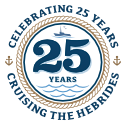

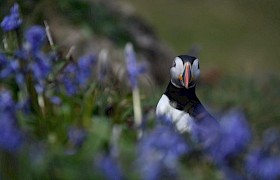
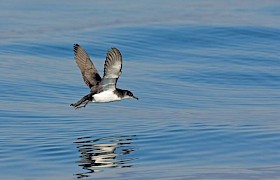
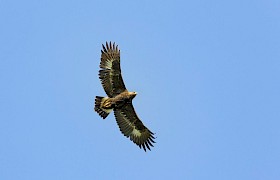
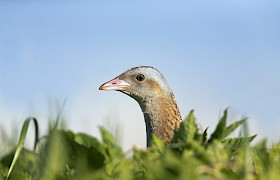
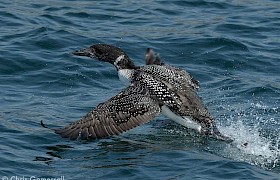
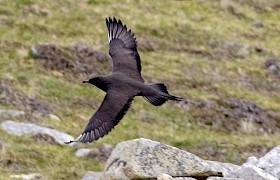
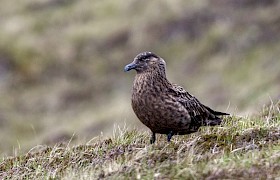
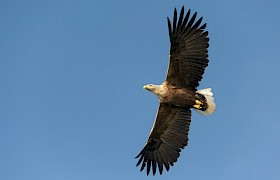
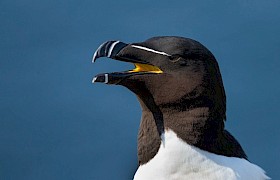

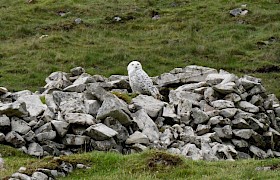
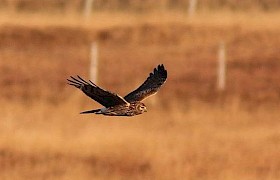
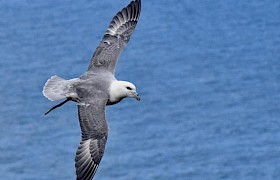
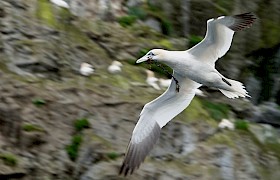






















Emma was very prompt informing us of a cancellation which enabled us to do the Far-flung Islands Cruise. All very friendly, informal and helpful. Delighted to be taken to 2 of my most favourite anchorages ever, Rona and Loch Scavaig! And wonderful to discover others to compete. Scenery is stunning whatever the weather. Onshore trips were well planned and balanced according to the capacity of clients. I enjoyed freedom at times. Crew local knowledge is what makes these trips so special…knowing where to find the wildlife and where to shelter when necessary is fundamental. Well done! Recent alterations on Elizabeth G are brilliant. Go for it!
Jan Shearn: 2 September 2019Far-flung islands: Mingulay to the Shiants